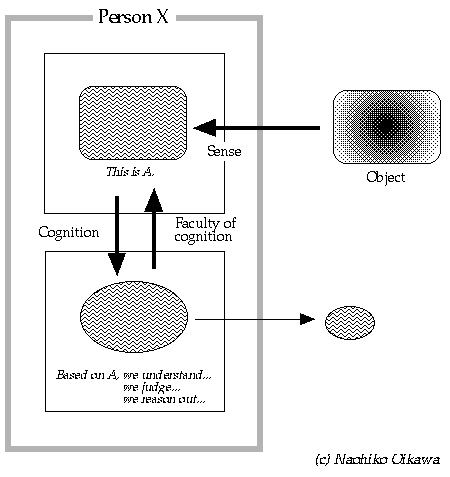
The thing which is brought to us is recognized as "This is A." But this recognition doesn't reserve the purity.
Using the recognition "This is A" as the material, based on such recognition, person X understands, judges, or reasons out something, which will form the structure, that is, faculty of cognition.
The thing which enable us to recognize is not the pure sense. The way person X edit the informations is based on the faculty of cognition which has been formed within the person.
The faculty of cognition is formed from the recognition, and based on that faculty of cognition, the recognition is defined and limited.
The problem here is the point that the faculty of cognition of person X distorts or makes up his recognitions to advantage itself. In this situation, the recognition of the person is shut down from the object, and closed within itself, that is, dogmatism.
